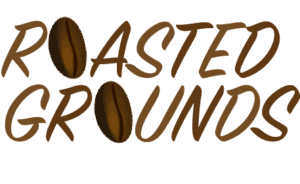Some people believe darker roasts have more caffeine. Others believe lighter roasts have more caffeine. Who’s right?
As the temperature of coffee beans increases, different chemical reactions occur. Therefore a light roast is chemically different from a dark roast. How this affects caffeine levels, however, is up for debate. It’s not clear whether darker roasts or lighter roasts have more caffeine. There’s research supporting both ideas. And for most people, it doesn’t matter. That’s because the difference, if there is one, will be so small as to be negligible.
Darker Coffee Weighs Less
Coffee beans lose weight during the roasting process. Water moisture and other molecules evaporate, causing beans to weigh less after roasting than before. On average, beans weigh about 20% less after roasting. The longer they roast, the less they weigh. I realize we’re talking about fractions of a gram, so it’s not a significant difference. But it does increase the amount of caffeine proportional to other chemical compounds in the coffee bean. So, a darker roast should have more caffeine per bean than a lighter roast.
But Caffeine Sublimates
Most molecules move from solid to liquid to gas as they heat up. For example, H2O takes the form of ice, water, and steam in its solid, liquid, and gas forms, respectively. Caffeine, however, shifts directly from solid to gas and then to liquid in a process known as sublimation. Caffeine’s sublimation point is 352° F. Since coffee roasts typically reach 400° F or hotter, some of the caffeine dissipates as gas during roasting. By that logic, the longer beans roast (and hotter they get), the more caffeine sublimates. Therefore, a darker roast should have less caffeine than a lighter roast.
So Yes, Both Are True
It’s likely that both of these processes are occurring simultaneously during coffee bean roasting. They counteract each other and it’s difficult to measure the final result. This is especially true since roasting occurs along a spectrum. There’s not a defined temperature or color that differentiates city roast, for example, from full city roast. At least not one that’s applied across all beans from all regions.
In the end, the difference in levels of caffeine between light and dark roasts, if there is one, is so slight that it doesn’t matter. An extra few sips of coffee would cancel out whatever difference there is.
For all of these reasons, I hesitate to give a number for the amount of caffeine in a cup of coffee. But if I had to give you a ballpark estimate, it’s about 100-125 mg per 8 oz cup of coffee.
It’s important to remember robusta beans have twice as much caffeine as arabica beans. Also, keep in mind the brewing method you use will have more of an influence on the amount of caffeine in your cup than the level of roast. Did you know there are more than a dozen different ways to brew coffee? For a summary of different brewing methods, click here.
